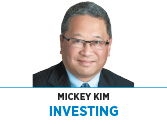Subscriber Benefit
As a subscriber you can listen to articles at work, in the car, or while you work out. Subscribe Now The following is an excerpt from Kirr, Marbach & Co.’s second-quarter client letter, available at www.kirrmar.com.
The following is an excerpt from Kirr, Marbach & Co.’s second-quarter client letter, available at www.kirrmar.com.
The front-page banner headline of the June 11 edition of The Wall Street Journal screamed, “Inflation jumps to 13-Year High,” as the consumer price index (CPI—measures prices for a weighted basket of consumer goods and services) for May increased 5% over May 2020. The stronger-than-expected recovery from the COVID-induced shutdown of the U.S. economy, coupled with higher-than-expected indications of inflation, have sparked a debate about whether the U.S. is entering an inflationary period similar to the 1970s.
It seems like eons ago, but it was just March 2020 when the Federal Reserve reduced its target for short-term interest rates to near zero and announced a program to purchase $120 billion a month of Treasury and mortgage bonds to hold down long-term borrowing costs, part of the government’s multi-pronged/multi-trillion-dollar plan to rescue the economy from the sharpest contraction in generations.
Fast forward to today, and the success of the vaccination program has led to a rapid reopening of the economy, which has unleashed a torrent of pent-up demand. The nearly total shutdown of an economy and subsequent reopening is a truly unique event without precedent or a playbook.
Regarding the recent elevated inflationary readings, both Treasury Secretary Janet Yellen and Fed Chairman Jerome Powell acknowledge inflation is higher than expected a couple of months ago, when the economy had not yet fully reopened. Further, while this condition will likely persist for several more months, they view the surge in inflation as “transitory,” due to a combination of pent-up demand and “bottlenecks” in the supply chain that had developed during the pandemic.
In other words, while inflation is likely to run higher than the Fed’s target of 2% for a while, supply and demand will eventually regain balance and inflation will moderate.
Pessimists see today’s elevated inflation as a precursor to the return of persistent double-digit inflation that plagued the U.S. economy four decades ago that led to 30-year mortgage rates of 16% and President Gerald Ford’s ill-conceived 1974 “Whip Inflation Now (WIN)” voluntary anti-inflationary plea that resulted in buttons and bumper stickers, but nothing of substance.
Various experts, pundits and soothsayers profess, at high volume and with great confidence, to know how this will all unfold. The truth is nobody knows, so I believe more humility and light and less heat will be helpful.
A little inflation is way better than deflation, which occurs when there is too little demand and too much supply, leading to lowered production and employment, a downward spiral in prices, debt defaults and recession/depression. In fact, Yellen welcomed the uptick in inflation, saying, “we’ve been fighting inflation and interest rates that are too low now for a decade.”
The “base effect” refers to the fact that economic activity and prices collapsed during the depths of the shutdown, which has caused recent annual increases in the CPI to be artificially high. This mathematical distortion in annual CPI inflation started in March, peaked in May and will continue through August. It’s more accurate to calculate the change in CPI versus the same month two years ago (instead of last year) and annualize the difference. On that basis, the May increase would have been 2.5%, not far from the Fed’s 2% target and 50% less than the headline-grabbing 5%.
Additionally, CPI inflation has been heavily impacted by price increases for certain specific categories that were crushed last spring and/or are unlikely to persist. For instance, the shortage of semiconductor chips has restricted production of new vehicles, causing a spike in used-vehicle prices, which were up 29.7% in May vs. 2020 and up 13.7% vs. 2019. Indeed, used vehicles alone accounted for fully one-third of the CPI increase in May.
Bond investors are “inflation vigilantes” but don’t believe the scary headlines. The yield on the 10-year U.S. Treasury Bond has actually dropped from 1.7% at the beginning of April to just under 1.5%. Similarly, the “break-even” or implied inflation expectation on the 10-year U.S. Treasury inflation-protected bond (TIPS) is about 2.3%, unchanged since the start of the quarter.
The stock and bond markets shuddered briefly when the Fed announced on June 15 it was leaving its target for short-term interest rates near zero and maintaining its bond purchases, but now, the anticipated strength of the recovery will enable them to begin moving the “patient” out of the ICU sooner than they expected a couple of months ago.
That’s great news, but investors will continue to be on edge as central banks worldwide grapple with their own “pandexit” strategies.•
__________
Kim is Kirr Marbach & Co.’s chief operating officer and chief compliance officer. He can be reached at 812-376-9444 or [email protected].
Please enable JavaScript to view this content.

Inflation the hidden tax no one talks about.
Price Inflation vs Monetary Inflation:
Technically, Price Inflation is when prices get higher or it takes more money to buy the same item and this is what people commonly think of when they hear the word inflation.
Monetary Inflation is an increase in the money supply which generally results in price inflation. This acts as a “hidden tax” on the consumers in that country and is the primary cause of price inflation.
Monetary inflation is commonly referred to as the government “printing money” although the actual process is a bit more complex than just cranking up the printing presses but the effects are essentially the same.
https://inflationdata.com/articles/2010/07/21/real-definition-inflation/